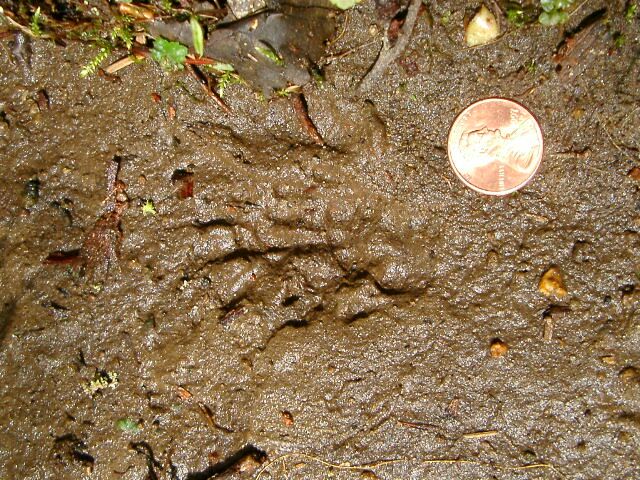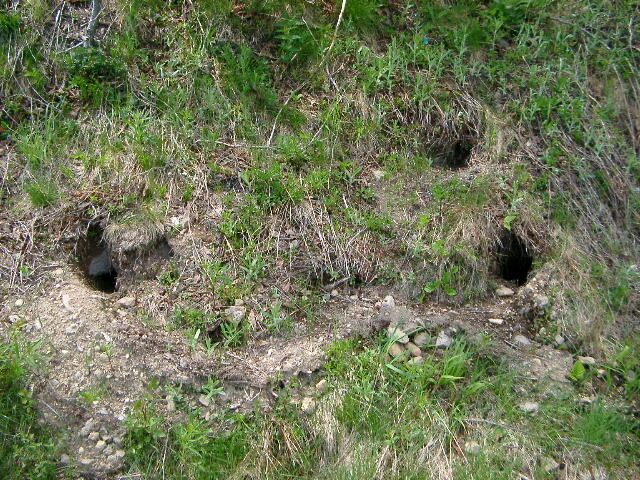

The mountain beaver (Aplodontia rufa) is an interesting but little known mammal unique to the Pacific Northwest. Its range falls mostly to the west of the Cascades, from northern California to southern British Columbia. First described by Lewis and Clark, the mountain beaver remains rather obscure, even here in the heart of its range. It is primarily nocturnal and is seldom seen.
If you have read anything about this fellow, you know that it is neither a true beaver nor strictly a mountain inhabitant. It is a rodent, though. In fact, with a lineage traced back 40 million years, the mountain beaver is our oldest rodent. While this suggests that it has been a very successful species, it also means that the mountain beaver has a primitive physiology. For example, it cannot pant or sweat and has a low reproductive rate. Studies have shown that its kidneys cannot concentrate uric acid as well as modern mammals so it must take in about 20% of its body weight in water daily in order to remove body wastes.
Although a couple tracking guides include mountain beaver tracks, you will not find this very helpful. In my experience, tracks are seldom found and other types of sign are much more conspicuous, especially burrows and feeding behavior. For more information about the life history of this fascinating animal, consult a good regional mammal reference (especially Maser or Verts and Carraway) or the web page and links prepared by biologist Dale Steele.
The burrow of the mountain beaver is distinctive in part because of its large size, 5-6 inches in diameter. Some burrows, especially those on slopes, will show signs of excavated dirt and rocks (sometimes called "kick out"). Look for them in wet meadows, the fringe of wooded areas, Douglas Fir and Western Hemlock forests, and clear cuts.
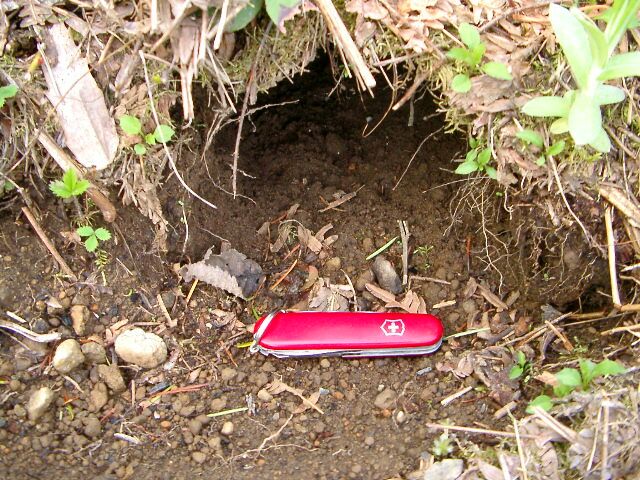
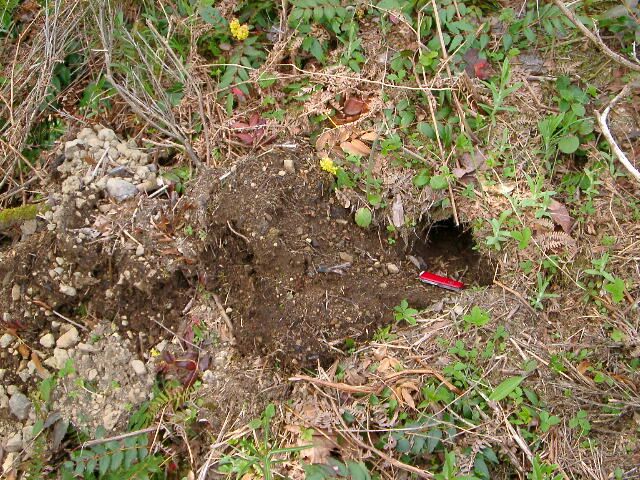
Also look for the clustering of several entrances. A burrow system may have as many as 10-30 entrances. While the burrow systems of individuals may overlap some, their territorial nature prevents concentrations of more than about 4 per acre. However, I observed about 7 active burrow systems in a half acre of prime habitat.

Burrows can run near the surface for some distance. Sections often have caved in roofs that are not repaired.
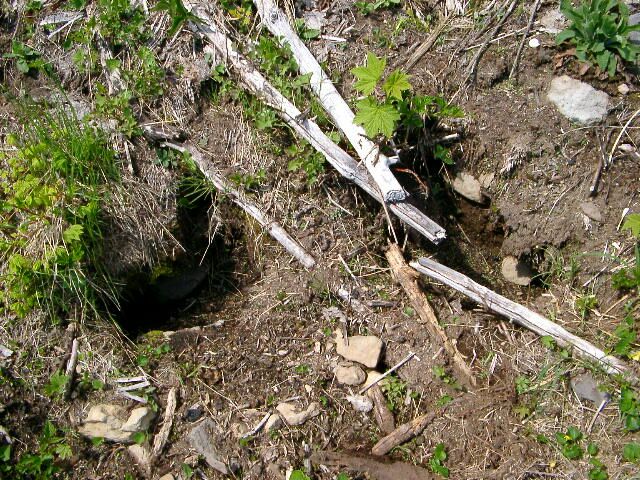
The mountain beaver is active all year long. After the spring thaw you can find the soil cores from winter burrows and runs similar to pocket gophers but on a larger scale. Some of these may lead to clumps of trees or shrubs with extensive bark and limb damage.
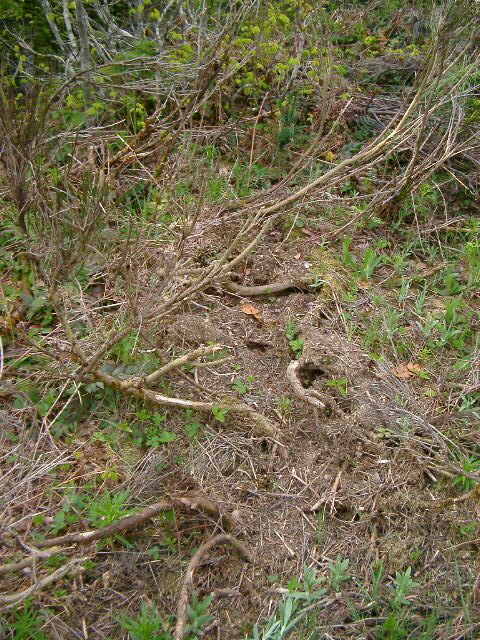
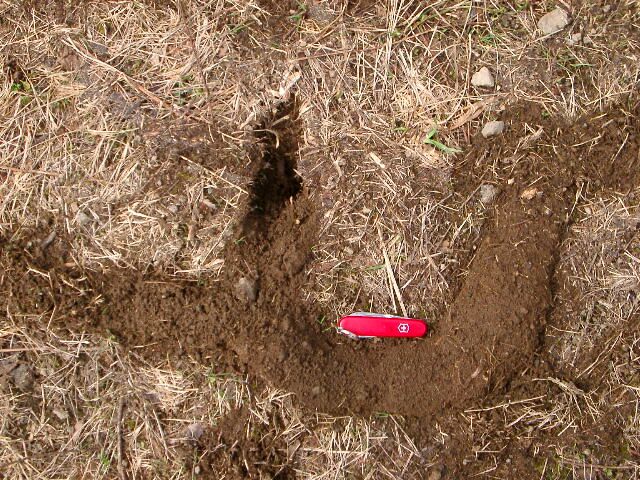
Mountain beaver are generalist herbivores, apparently using nearly all vegetation close at hand. I have seen evidence of feeding on grasses, ferns, forbs, shrubs, hardwoods (alder and willow), and (to the consternation of foresters) conifers. They are able to use plants like bracken and sword ferns that other species cannot. The typical range is about 25 yards from the nest.
Haystacks. These piles of vegetation are left to wilt at the entrance to the burrow before transport to a feeding chamber. Pika also make haystacks but are more selective in the plants they harvest and choose to live in rocky scree slopes at higher elevations rather than wet meadows or woods.
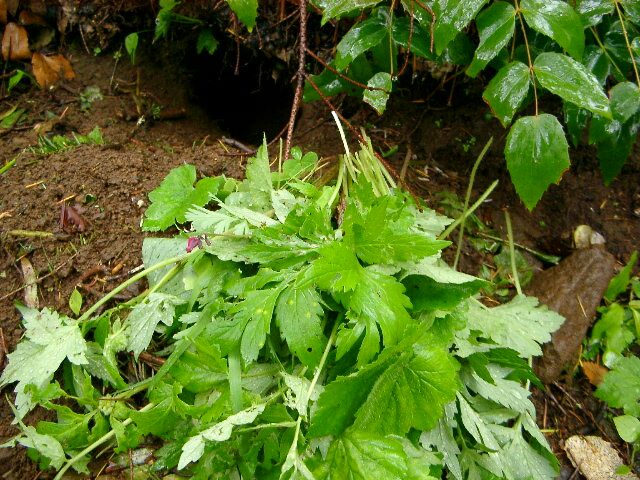
In the late fall, green vegetation becomes more scarce. The content of these haystacks shifts to evergreen plants such as sword fern, salal, Oregon grape, Scotch broom, Douglas fir, and rhododendrum.
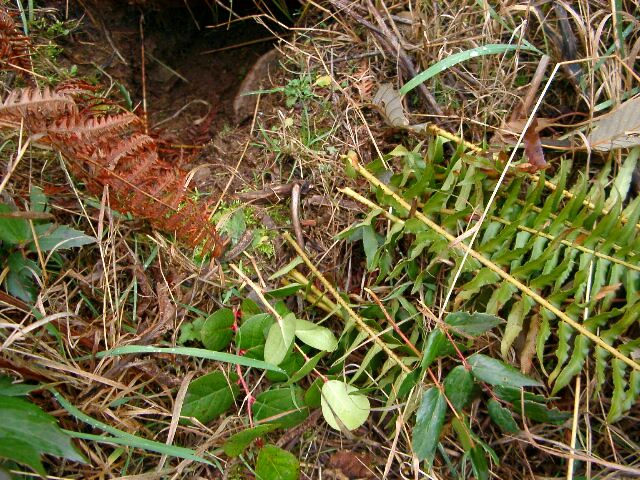
Nest material. Dried material is collected to line the nest. Haystacks are only allowed to wilt, not dried, perhaps to store properly in the humid feeding chamber. Dried material near the entrance was probably gathered to line the nest or could be spoiled food cleaned from the feeding chamber and pushed out of the burrow as in the example below.
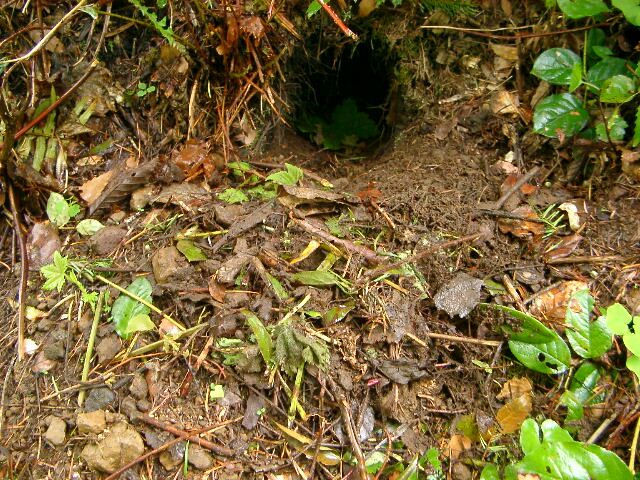
Clipped vegetation. Look for herbs that have been cut at a 45 degree angle typical of rodents. Distinguish this from the ragged cut that deer and elk make since they only have teeth on the lower jaw and tear rather than shear the stem.
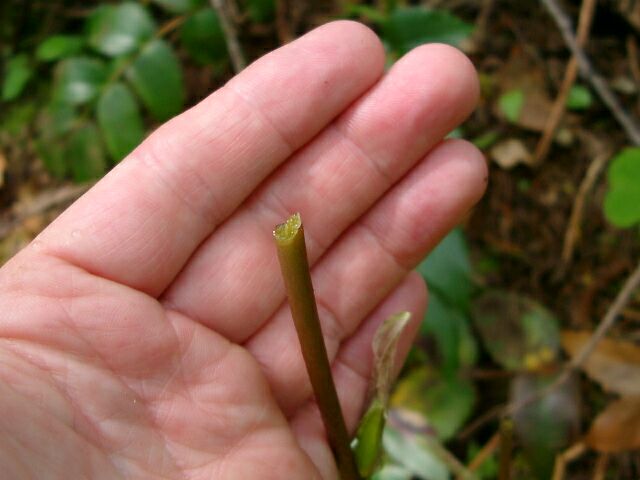
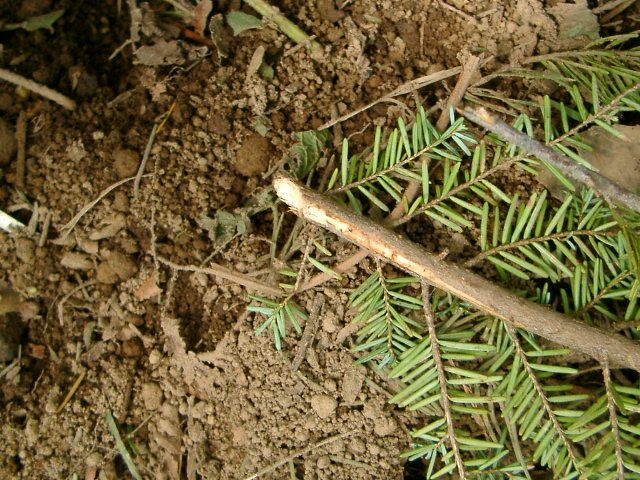
Clipped twigs. Diagonally cut twigs of trees or shrubs are also found. Although rabbits and hares make similar cuts, the maximum diameter is about 1/4" while mountain beaver can handle twigs .5" to 1" in diameter.
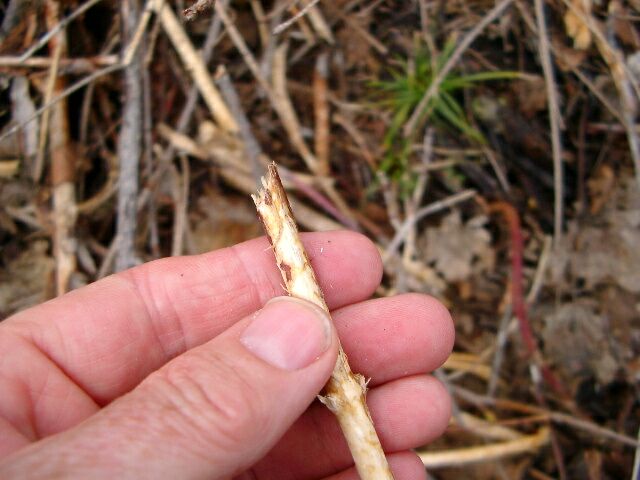
Basal barking. Mountain beaver strip bark from the base of small trees but store it in feeding chambers rather than leave pieces lying around the tree as black bear and porcupine do. Mountain beaver will also gnaw the bark with teeth that are about 1/8" wide. This could be mistaken with bear incisors scraping the cambium layer but mountain beaver have smaller, paired teeth and make a more regular pattern as in the example below.

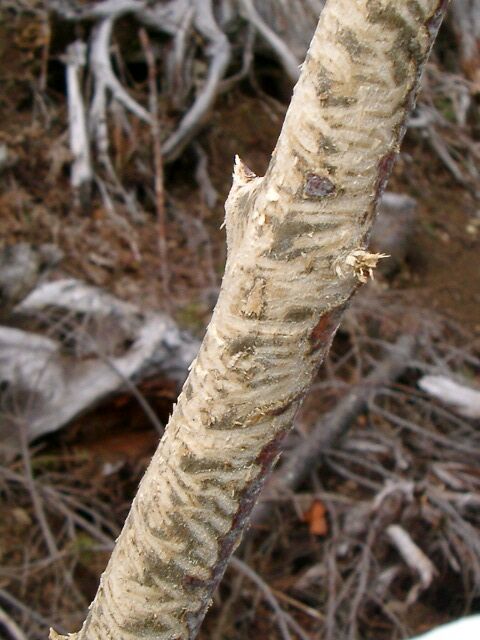
Several biologists mention that when mountain beaver cut limbs from a sampling they make the cut an inch or so from the main stem. I have not found this to be very reliable as you can tell from the previous two photos.
Porcupine often leave scat and bark littering the feeding area.
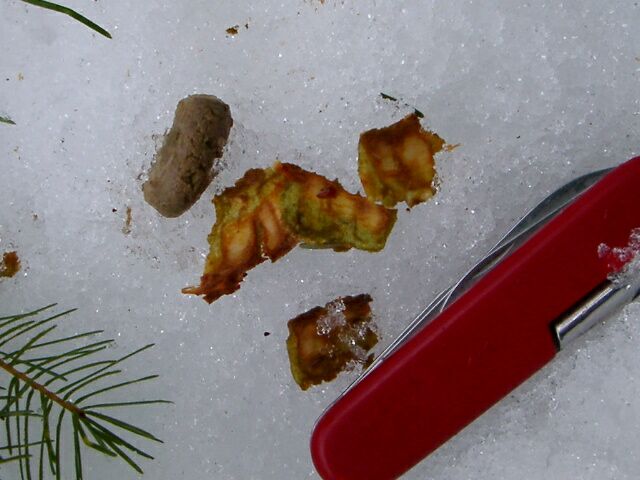
Scat. If you find any, it is probably from another animal using the burrow. Mountain beaver reingest their soft scats, much as rabbits do, and store their hard scats in fecal chambers underground.
Unlike most rodents there are 5 toes front and back. Here is a front foot. If you look close you will see a small right hand print including a short "thumb" (toe 1). The long nails extend well beyond the toes, essentially doubling the length of the mark made by each digit.
